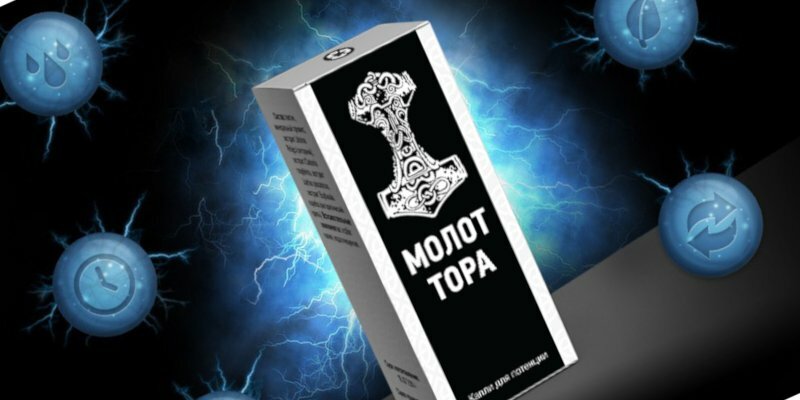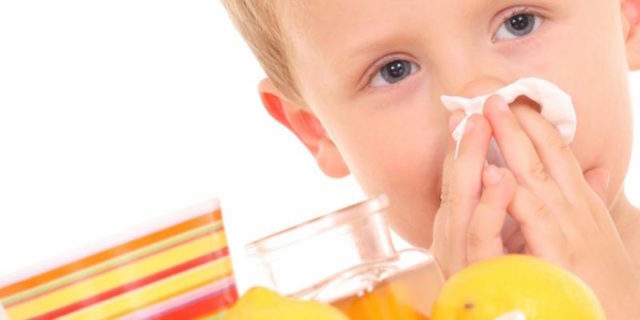
Contents of the page
- 1 Causes of acute respiratory infections in children
- 2 Symptoms of acute respiratory infections
- 3 Diagnosis of respiratory infections
- 4 Antiviral agents
- 5 Nasal drops
- 6 Prevention of respiratory infections in children
Acute respiratory infections, or so-called "catarrhal" diseases, most often occur in autumn-winterperiod and early spring - in a season of low immunity and "binge" of viral infections. With the treatment of ARI in children, parents face at least 1-2 times a year, and a child of a kindergarten age usually gets sick even more often.
Causes of acute respiratory infections in children
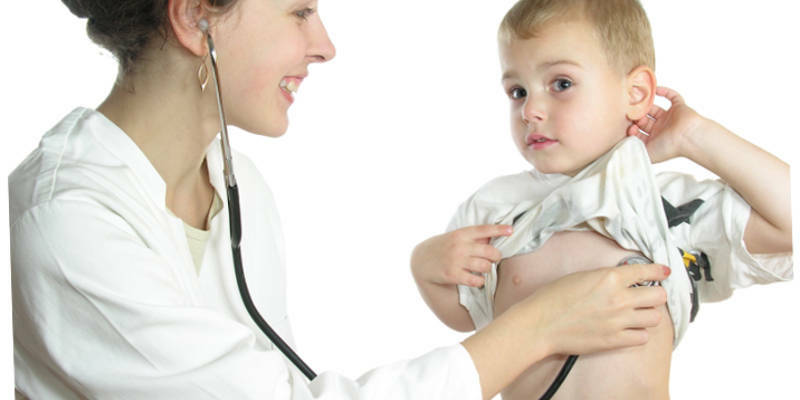
Acute respiratory illnesses affect the respiratory tract, mainly the upper respiratory tract, but can also go into the broncho-pulmonary form. In 90% of cases the causative agent is one of the numerous viruses:
- adenoviruses;
- rhinovirus;
- paragripp;
- herpes and others.
For this group of diseases the term ORVI is used. The remaining 10% fall on bacteria( streptococci, pneumococci, meningococci) and parasitic infections( mycoplasmosis, chlamydia).
With the simultaneous action of various pathogens, complications develop. Usually, the disease begins with a viral infection, and then against a background of weakened immunity, a bacterial infection joins it.
The main way of transmission of respiratory diseases is airborne and contact. The least frequent occurrence of ORZ in children under one year. When breastfeeding, they are protected by maternal immunity, and sick family members are usually isolated so as not to infect the baby. With the expansion of the circle of intercourse, the morbidity also grows.
In pre-school institutions, cold illnesses often become epidemic. In kindergartners, immunity is still in the process of formation, and close interaction in the team constantly leads to the exchange of microflora, and hence - to cross infection. A similar situation persists in the junior school.
Symptoms of
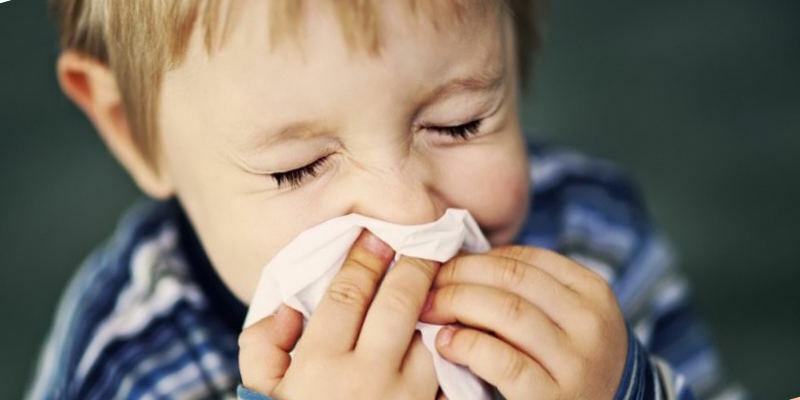
From the introduction of the pathogen into the mucous membranes of the upper respiratory tract before the onset of the first symptoms passes from 12 hours to several days, depending on the type of infection. The child develops catarrhal phenomena:
- runny nose;
- a sore throat;
- hyperemia, edema, pain in the larynx;
- cough;
- general malaise.
Signs of acute respiratory infections may be different for infection by different types of pathogens. With rhinovirus, the lesion is localized mainly in the nasal cavity with the corresponding symptoms: abundant secretions, severe stuffiness. Adenovirus actively multiplies in the mucous larynx, causing inflammation - laryngitis.
The temperature in children with ARI is indicative of the immune system fighting against infection and usually does not rise above 38.5 °.At this level, you do not need to knock it down, the main thing is to closely monitor the child's condition, so that there is not a lot of heat, fever, seizures, vomiting - in such cases it is better to call an ambulance. If the overall well-being of the baby does not suffer, he can be allowed to play and do his own business.
For each age there is a characteristic pattern of the disease:
- ARD in children under one year is acute: with heat, marked signs of intoxication, dehydration. The fetus is naughty, because of the stuffy nose, he does not sleep well and has difficulty with sucking. Toddlers should be protected from infections not only because of severe course, but also at a high risk of complications - otitis, bronchitis, pneumonia.
- ARD in a child 2 years and older, too, may be accompanied by high fever. The child complains of pain while swallowing, runny nose and cough. Complications develop less frequently than in infants, mostly affecting the bronchi and the middle ear.
- More adult children tolerate the disease more easily. They rarely have fever and a strong cough, but they often have tonsillitis.
Diagnosis of respiratory infections

The diagnosis of ARI is based on the examination of the child by a pediatrician. There is a runny nose, puffiness and reddening of throat, coughing and its character, listening to wheezing. If in doubt, a chest X-ray, a general blood test, a nasopharyngeal swab to determine the pathogen when a bacterial infection is suspected can be performed.
An ordinary cold should be differentiated from sore throats and flu, dangerous serious complications. If the child has fever, there is a sore throat, but there is no runny nose - you can not be treated at home, as with a simple ARVI.With inflamed tonsils, the doctor will take a smear that will help detect and specify bacteria. Based on the results of the study, antibiotics are administered that directly affect the pathogens identified.
To determine the flu, specific tests do not and are guided by the clinical picture of the disease. The main distinguishing features of conventional ARI and influenza are given in the table:
| Symptoms | ARD | influenza |
| Onset of the disease | gradual | Sudden appearance of acute symptoms |
| Temperature | Normal or slight increase, not more than 38.5 ° | Severe heat( up to 39-40°), appears abruptly and lasts for several days |
| General condition | Mild discomfort | Severe signs of intoxication: headache, photophobia, aches, weakness, chills, profuse sweating |
| Runny nose | aboutsore | Nasal discharge absent, may appear small incomplete |
| Inflammation in the throat | Severe hyperemia, pain | Slight swelling of the soft palate, posterior wall of the throat a few days after the onset of the disease |
| Cough | Dry, painless, starts almost immediately | First absent, appearson day 2 - 3 strong and with chest pain |
| Sneezing | Often often | Not typical |
| Eye redness | Appears only with concomitant bacterial infection | Quite frequent symptom |
As a result of the examination, a specific diagnosis appears in the child's medical record( acute rhinitis, laryngitis, pharyngitis, bronchitis, etc.), since ARD is not a name of the disease, but a symbol for several groups of diseases with catarrhal symptoms, including allergicrunny nose.
Treatment of acute respiratory disease

Depending on the diagnosis, the doctor determines how to treat ARI in children. With bacterial infection, antibiotic therapy is prescribed to avoid complications. With the virus origin of the disease, the body needs to create conditions for fighting the pathogen. Modern medicine proceeds from the fact that ARVI can not be cured with the help of medicines. The purpose of therapy is to strengthen immunity and alleviate the condition of the patient.
General recommendations for treating ARI in children:
- Do not disable the child's temperature if the thermometer shows less than 38 - 38.5 ° C.The first figure is the maximum allowable threshold for newborns, after 2 months, be guided by the second indicator. At a high temperature, the baby can feel generally normal, but when fever occurs, one should not rush with antipyretic fever. With hyperthermia, the viruses actively lose their ability to reproduce, and if the temperature is lowered, the natural defense of the organism reduces effectiveness. The exception to this rule is the presence in the child of congenital malformations of the nervous and cardiovascular systems, metabolic disorders, seizures.
- Do not abuse antipyretic drugs. Too high temperature in a child is better to remove by rubbing and other folk remedies, and if it does not help - give the medicine. The best option is syrup or candles based on ibuprofen( children's Nurofen).
- Discard hot compresses and inhalations during the temperature. This can worsen the condition and cause obstruction of the lungs. Also dangerous for children are mustard plasters, pepper plaster, wiping with vinegar.
- Do not give antibiotics without prescribing a doctor. If the child has a normal ORVI, antibacterial drugs are not only completely useless, but also harmful to health. They suppress beneficial microflora and undermine the body's immune defense.
- Do not wrap your baby, especially at high temperature. Dress the baby in spacious light clothing to avoid overheating and create an organism for self-regulation.
- Do not force the child to eat. If the baby refuses to eat, do not insist. When the disease recedes, he becomes hungry and himself asks to eat. Preference is given to light milk and vegetable food in small portions.
- Do not put your child to bed. If the crumb feels well, let him play and do his own business. If he is seriously ill, he will want to lie down under a blanket.
- Organize a healthy microclimate in the children's room. The room should not be hot or cold. The optimum air temperature is 20 - 21 ° С, humidity - from 50 to 70%.Often ventilate the room, install a humidifier or hang on wet radiators wet sheets.
- Let the child drink more. Clean water, warm tea, and mors will do, on a spoon - two every 10 minutes. When there are signs of dehydration( rare urination, dark urine, dry tongue) water a patient with Regidron or other saline solution.
- Flush the baby with the nose. Thus, you cleanse the nasal passages from the mucus, and with it and from the pathogens. It will be easier for the baby to breathe. For this purpose, use ready-made preparations based on sea water( Aquamaris, Dolphin), saline or make a salt liquid at the rate of 1 tbsp.l.sea salt on a glass of water. With severe stuffiness, it is better to use a spray that moisturizes the mucous membrane. If the nose passes, you can inject liquid struyno. To an adult child, offer rinses for the throat.
- Be wary of drops to the nose. If the child can not breathe through the nose, drip sachets of vasoconstrictor. They will relieve swelling and ease breathing, but they can be used no more than 3 to 4 days. Do not bury oily preparations and breast milk. The first can cause fatty pneumonia, the second - serves as a breeding ground for pathogens.
Komarovsky about ARD

The well-known Dr. Komarovsky about treatment of ARI in children says this: if a child has a cold, this is a sure sign of a viral disease. In this case, the best medicines are hunger, water and cool moist air. The diet helps to relieve the burden from the body and direct its forces to fight the virus. Abundant drink and moisture liquefy snot and sputum, so that the nose and bronchi are cleared more quickly from mucus. All the rest( inhalations, antiviral medicines, mustard) is more of a comfort for the mother than a real help to the child. What with the treatment, that without ORVI passes for 4 - 7 days.
Anxiety should be beaten if the baby has fever, sore throat, but the nose is dry. It can be a sore throat, so immediately go to the pediatrician to confirm the diagnosis and get a prescription for antibiotics. With angina, self-medication and folk remedies as the main method of treatment are unacceptable.
Drug Therapy
The use of drugs in ARI in a child is necessarily consistent with the pediatrician. Here, the opinions of doctors differ. Some actively recommend antiviral drugs, cough medicine and drops in the nose, others, like Dr. Komarovsky, call on parents not to get carried away with drugs without special need.
If nevertheless there was a need for taking medications, it is important to choose the safest ones and age-appropriate child.
Antiviral drugs
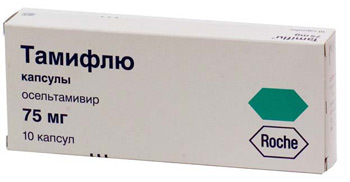 Photo: Tamiflu
Photo: Tamiflu This group of drugs stimulates the production of interferons and reduces the activity of viruses in the body. Children are given them with weakened immunity, and during epidemics for the purpose of prevention.
| Formulation | Form | Form | Age of the child | Indications |
| Tamiflu | Powder for the suspension | From 1 year, during epidemics allowed for children older than 6 months | Active against influenza A and B viruses. | |
| Vessel | Syrup | Older than 1 year | Applies toprevention and treatment of influenza A | |
| Remantidine | Tablets | Allowed for schoolchildren aged 7 years | Showed when infected with influenza A, effective at the beginning of treatment in the first 2 days | |
| Flu-Heel | dragee | From the birth | homeopathic remedy for the treatment and prevention of acute respiratory viral infection, the flu | |
| Viferon | Rectal suppositories | Permitted to newborns | Are indicated in the treatment of any forms of acute respiratory syndrome | |
| Grippferon | Drops in the nose | From the birth | In rhinitis, ARD fights with vials directly at the site of their active reproduction- on the nasal mucosa | |
| Pediatric Anaferon | of the tablet | Older than 1 month | Prophylactic reception. Treatment of ARVI and bacterial acute respiratory disease with the first signs of the disease | |
| Arbidol | tablets | From 3 years | For treatment and prevention of influenza, ARD | |
| Kagocel | tablets | From 3 years | Therapy and prevention of acute respiratory infections |
Nasal drops
With abundant discharge from the nose, the child can experiencesevere discomfort: stuffiness, itching, shortness of breath. Babies with a cold badly sleep and eat. To relieve the condition, it is better to wash the nasal passages with sea water. But if the procedures do not help, you can instill nasal drugs with vasoconstrictive, decongestant action:
- Vibrocil;
- Nazivin;
- Tysine;
- Sanorin;
- Otrivin and others.
Please note that babies should not be dripped with adult drops unless specifically indicated in the product summary. This is due to too large doses in medications not intended for children. Precisely observe the dosage and do not apply drops for more than 5 days to avoid addiction.
Cough remedies

Often there is a dry cough, which becomes wet with time. To facilitate the departure of sputum, it is recommended to drink more often, and it is better to do without antitussive drugs. The main indications for the use of mucolytics and expectorants are bronchitis and pneumonia. Drugs that dilute sputum are completely contraindicated in children younger than 2 years.
In other cases, the cough in a child is more likely caused by the flow of a snot on the back wall of the nasopharynx and a sore throat, that is, it has a reflex character. It is enough to rinse your nose and gargle, and also ease the discomfort of candy from coughing( Linkas, Bronchicum), sprays of sore throat( Tantum Verde, Ingalipt).
Popular methods in acute respiratory infections
Folk recipes are often the only means of treating ARI in the arsenal of parents who prefer not to stuff the child with "chemistry" from pharmacies. By giving this or that self-made medicine, it should be remembered that each of them can have contraindications, at least, an allergic reaction. Also, it is not recommended to treat infants with folk methods.
Several popular recipes from ARI:

- Sore throat and cough are well removed by warm milk with the addition of drinking soda and honey at the tip of the knife.
- Kalina, ground with sugar, is an effective remedy for ARI with a strong cough and sore throat.
- Cough is also helped by radish juice. The raw root is rubbed on the grater and covered with sugar. In the allocated juice honey is added, the medicine is given to the child every hour for 1 tablespoon.
- Teas from cowberry, raspberry, chamomile, rosehip have disinfecting and diaphoretic effect. Such a drink helps the body fight off pathogens and actively get rid of toxins.
- For gargling, make a warm soda solution, add a spoonful of salt( sea or cooked) and a few drops of iodine.
- Lime tea normalizes the body temperature of the child without taking antipyretics.
- If the baby does not have temperature, it is useful to make inhalation with infusions of herbs: eucalyptus, chamomile, sage.
- Warmers and dry heat on the feet, neck, chest, back, nose area are allowed at normal temperature.
Prevention of respiratory infections in children

Strong immunity is the best protection against ARI.But in young children the immune system is still being formed, besides they constantly meet with viruses and bacteria in preschool and in school. For prevention it is recommended to carry out general strengthening measures and to observe hygiene:
- Systematic hardening from birth: air baths, walks in any weather, wiping and dousing.
- The nutrition of the child should be balanced by nutrients, vitamins and microelements.
- The room where the children are located should be regularly ventilated.daily wet cleaning is necessary.
- When coming from the street, the child first of all should wash his hands with soap.
- Physical activity strengthens the immune system.
- Going for a walk, the child should be dressed in the weather: do not sweat and do not overcool.
- In the season of epidemics it is desirable to avoid public places with a large crowd of people.
- Before leaving the house during periods of high incidence lubricate the nostrils with oxolin ointment, upon return - rinse the nose with saline.
These measures are not capable of 100% protection of the child from infection, but help faster and easier transfer of ARI.After the disease, partial immunity to the pathogen is formed, but since there are a lot of different respiratory bacteria and viruses, one cold can follow another. Our doctors often put ill children on special records, while Western medicine allows up to 12 episodes of ARI per year, and it is considered a variant of the norm.

